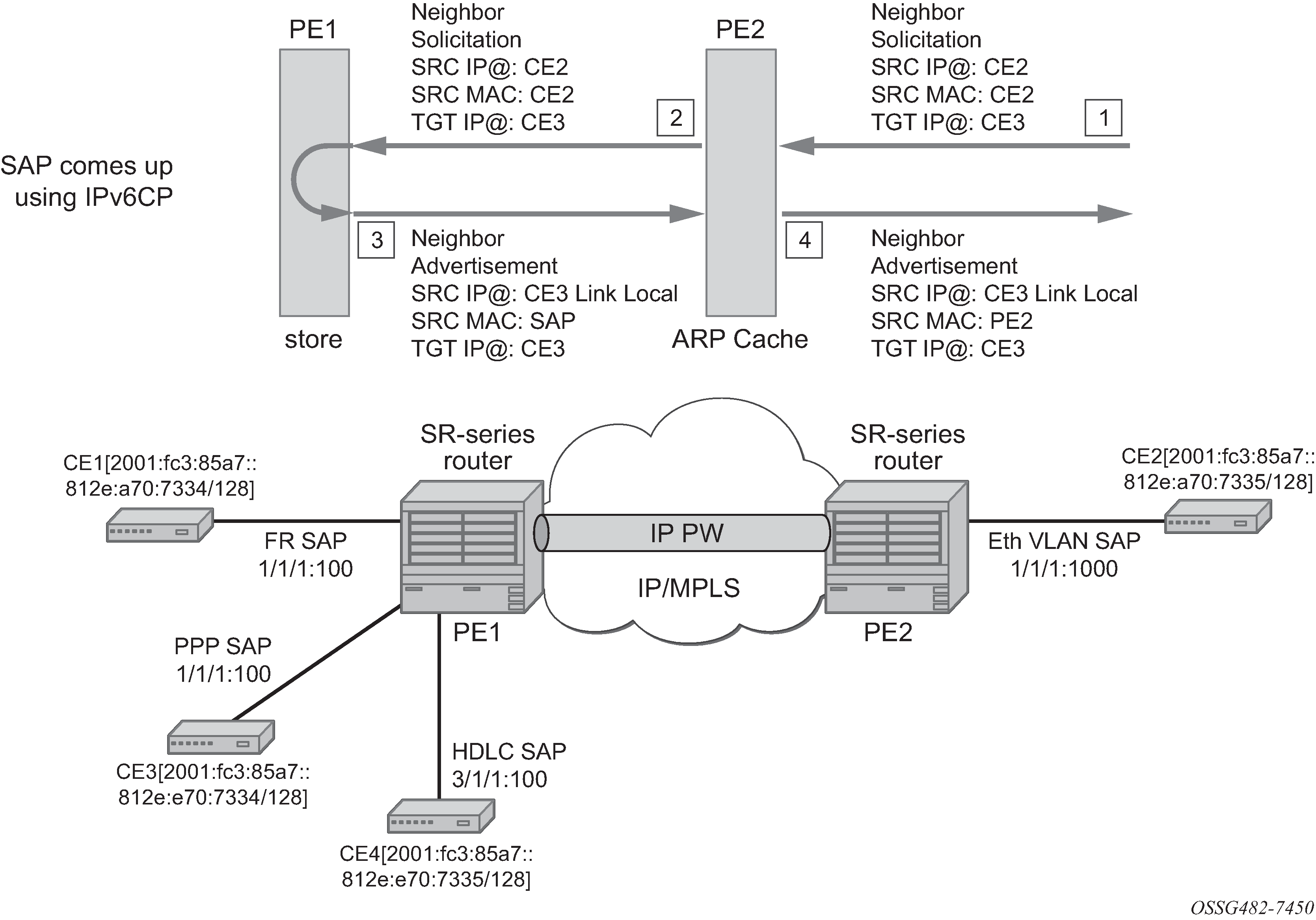The IPv6 Datapath operation uses ICMPv6 extensions to automatically resolve IP address and link address associations. These are IP packets, as compared to ARP and invARP in IPv4, which are separate protocols and not based on IP packets. Manual configuration of IPv6 addresses is not supported on the IP Interworking VLL.
Each PE device intercepts ICMPv6 Neighbor Discovery (RFC 2461) packets, whether received over the SAP or over the pseudowire. The device inspects the packets to learn IPv6 interface addresses and CE link-layer addresses, modifies these packets as required according to the SAP type, then forwards them toward the original destination. The PE is also capable of generating packets to interwork between CEs (by using IPv6 Neighbor Discovery) and CEs that use other neighbor discovery protocols to bring up the link; for example, IPv6CP for PPP.
The PE device learns the IPv6 interface addresses for its directly-attached CE and other IPv6 interface addresses for the far-end CE. The PE device also learns the link-layer address of the local CE and uses it when forwarding traffic between the local and far-end CEs.
As with IPv4, the SAP accepts both unicast and multicast packets. For unicast packets, the PE checks that the MAC address/IP addresses are consistent with that in the ARP cache before forwarding; otherwise, the packet is silently discarded. Multicast packets are validated and forwarded. If more than one IP address is received per MAC address in a neighbor discovery packet, or if multiple neighbor discovery packets are received for a specific MAC address, the currently cached address is overwritten with the most recent value.
Figure 1 shows the data path operation for IPv6 on an IP Interworking VLL between the Ethernet and PPP (IPv6CP) SAPs.

With reference to neighbor discovery between Ethernet and PPP CEs in Figure 1, the steps are as follows:
Ethernet-attached CE2 sends a Neighbor Solicitation message toward PE2 to begin the neighbor discovery process.
PE2 snoops this message, and the MAC address and IP address of CE2 is stored in the ARP cache of PE2 before forwarding the Neighbor Solicitation on the IP pseudowire to PE1.
PE1 snoops this message that arrives on the IP pseudowire and stores the IP address of the remote CE2. Because CE3 is attached to a PPP SAP, which uses IPv6CP to bring up the link, PE1 generates a neighbor advertisement message and sends it on the Ipipe toward PE2.
PE2 receives the neighbor advertisement on the Ipipe from PE1. It must replace the Layer 2 address in the neighbor advertisement message with the MAC address of the SAP before forwarding to CE2.